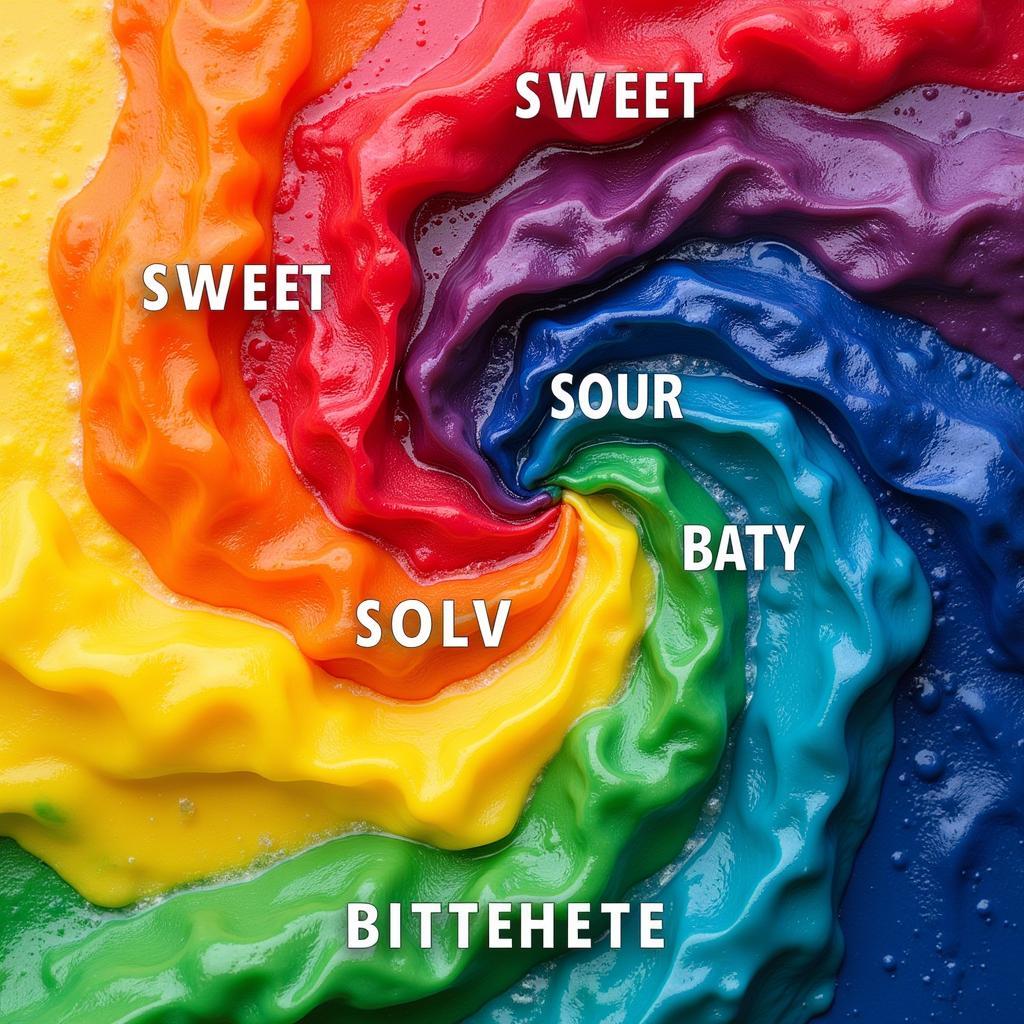Can people taste colors? It’s a fascinating question that explores the intricate relationship between our senses. While we typically associate taste with our tongues and color with our eyes, the reality is more complex. The interplay of senses, known as synesthesia, can sometimes blur these lines, leading some individuals to experience a blending of sensory perceptions. Let’s delve into the science and explore the intriguing world of color and taste.
Does our perception of color influence how we perceive taste? Research suggests it does. For example, a bright red strawberry might seem sweeter than a pale one, even if they have the same sugar content. This isn’t just about personal preference; studies have shown that color can significantly impact our taste expectations. A vibrant, saturated color can lead us to anticipate a more intense flavor. This connection highlights the powerful influence our visual sense has on our gustatory experience. do m&m colors taste different.
How Does Color Affect Taste Perception?
Color’s impact on taste isn’t merely anecdotal. It’s rooted in our evolutionary history and psychological wiring. Bright, vibrant colors in nature often signal ripeness and nutritional value, leading us to associate them with pleasant tastes. Conversely, dull or muted colors can signal spoilage or unpalatability, creating negative taste associations. This innate connection is further reinforced by cultural and learned experiences, shaping our individual preferences and expectations.
The Role of Marketing and Branding
The food industry understands the power of color. Marketing and branding strategies leverage color psychology to influence consumer choices. Think about the vibrant hues of candy packaging or the deep, rich colors used to advertise coffee. These color choices aren’t arbitrary; they’re carefully selected to evoke specific taste associations and entice consumers. Even subtle changes in color can drastically alter our perception of a product’s flavor profile.
Synesthesia: Tasting Colors Literally
While color can influence taste perception for everyone, some individuals experience a more profound connection: synesthesia. This neurological phenomenon causes a blending of senses, where stimulation of one sense triggers a simultaneous perception in another. For synesthetes, tasting colors is a literal experience. For example, a specific color might evoke a distinct taste, like blue tasting like blueberries or yellow tasting like lemons. This fascinating condition offers a unique window into the interconnectedness of our sensory systems.
Types of Synesthesia Related to Taste and Color
There are different types of synesthesia related to taste and color. Some synesthetes might experience taste sensations when they see certain colors, while others might see colors when they taste certain foods. The specific associations vary greatly between individuals, creating a highly personalized sensory experience. This highlights the complex and often unpredictable nature of synesthesia.
 Synesthesia: The Experience of Tasting Colors
Synesthesia: The Experience of Tasting Colors
Can We Train Ourselves to Taste Colors?
While synesthesia is a neurological condition, the question remains: can we train ourselves to taste colors? While we can’t induce true synesthesia, we can certainly heighten our awareness of the interplay between our senses. By paying closer attention to the colors of our food and how they influence our taste expectations, we can develop a more nuanced and appreciative palate. This mindful approach to eating can enhance our enjoyment of food and deepen our understanding of the sensory world around us.
Do M and M colors taste different? Find out more about how color affects the perception of flavor. do m and m colors taste different. Also, explore the impact of food coloring on taste in our article does food coloring have a taste.
Conclusion
Can people taste colors? The answer is multifaceted. While true tasting of colors is experienced by synesthetes, color significantly influences taste perception for everyone. From evolutionary predispositions to marketing strategies, color plays a crucial role in shaping our gustatory experiences. By understanding this interplay, we can appreciate the complex and fascinating relationship between our senses and the world around us. Interested in color schemes for different occasions? Check out our article on what are memorial day colors. For those interested in the latest tech trends and colors, we also have an article on what colors will the iphone 16 come in.
FAQ
- What is synesthesia?
- How common is synesthesia?
- Are there different types of synesthesia?
- Can synesthesia be acquired?
- How does color affect food choices?
- How do marketers use color to influence consumers?
- Can I train myself to taste colors like a synesthete?
Do you have any further questions about color and its impact on your life?
Contact us at Phone Number: 0373298888, Email: [email protected], or visit our address at 86 Cau Giay, Hanoi. Our customer service team is available 24/7.

